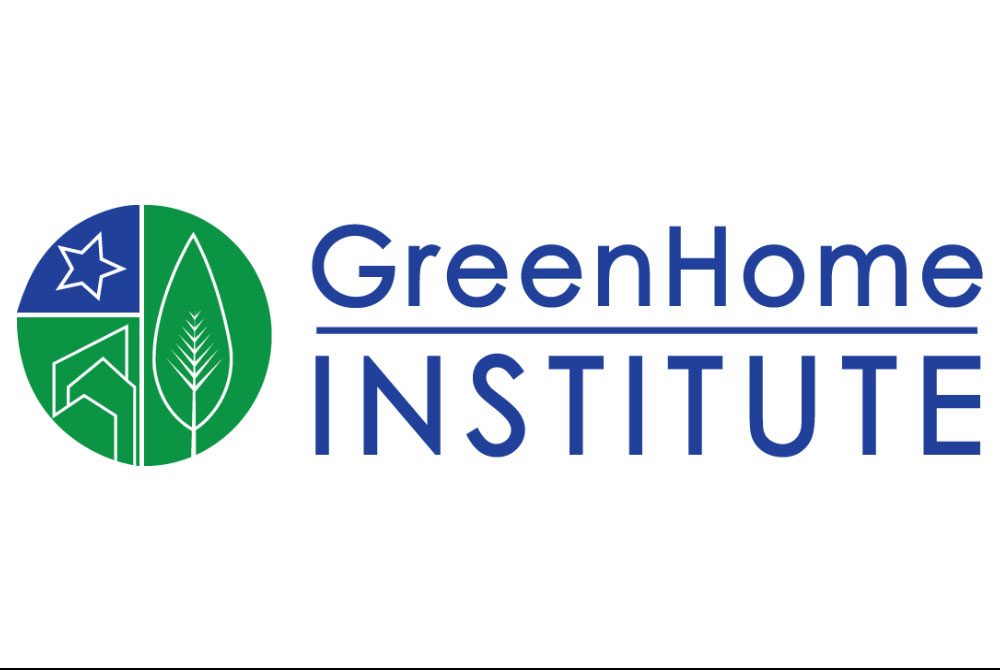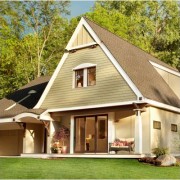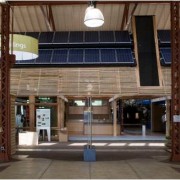Post by: Michelle Krueger
For more than a decade, the green-building movement has been gaining momentum based on one simple fact – when you reduce the consumption of energy in your home, you save money.
In tracking the trends that are driving the growth of green building, McGraw-Hill Construction’s 2011 Green Outlook reports 70% of buyers would prefer to purchase a green home over a conventional one. The top 3 reasons cited include reduced operating costs, increased value and a greater return on investment.
According to the National Association of Home Builders (NAHB), which certifies residential building projects that meet the criteria of The National Green Building Standard, green homes comprised 17% of the overall residential construction market in 2011 and are expected to grow to between 29% and 38% of the market by 2016.
“The building science has been around for a while, and now we have programs and labels from organizations like the Environmental Protection Agency (EPA) and the Department of Energy (DOE) to quantify it,” Jerry Thatcher of Valparaiso’s Energy Diagnostics (LEED Green Rater), a leader in the energy rating industry since 1992, said. “We work with builders primarily in the tri-state area (Indiana,IllinoisandMichigan). The most common certification we do is the residential Green Building Standard through NAHB. We also certify homes through the ENERGY STAR® program, RESNET and LEED for Homes.”
A joint program of the EPA and DOE started in 1992, ENERGY STAR promotes energy efficient products and practices that help save money and protect the environment. In addition to new homes, the blue ENERGY STAR label appears on over 60 product categories. In 2011, ENERGY STAR saved consumers more than $23 billion on utility bills and reduced greenhouse gas emissions equivalent to the annual emissions from 41 million vehicles.
Created by RESNET, The HERS Index provides a standard for measuring energy efficiency that’s essentially the home building industry’s version of the MPG (miles per gallon) sticker used by the automobile industry. The major difference is that a lower HERS rating means a home is more efficient.
LEED or Leadership in Energy and Environmental Design was developed by the US Green Building Council (USGBC) in 2000 as a voluntary and technically rigorous process that demonstrates leadership, innovation, environmental stewardship and social responsibility.
“So far we are on track to meet our target of rating 3,500 units this year,” Thatcher said. “LEED is still our least used label mostly because people are so concerned about the execution since it was originally created for commercial building. However, I am confident in saying that we will soon have our first LEED Platinum Certification in the area soon. We’ve seen maybe 8-10 similarly labeled units in and around Chicago.”
Located along the shores of Indiana’s second largest lake in Culver, this newly constructed home on Lake Maxinkuckee has been a labor of love for the owner, while builder Dean Jones, vice president of Mirar Development, Inc. in Crown Point found it to be a unique and valuable learning experience.
For starters, he agrees with the US Green Building Council when they state that the LEED green home rating system is rigorous.
“For this particular home buyer, LEED was a priority from day one,” Jones explained. “He had been studying the guidelines and was well versed in the program. He wanted to do it because he is concerned about the environment, about not negatively impacting the lake and its immediate surroundings, and because he believed so strongly in the basic premise of the program that he was willing to financially commit to it. His project was initially certified Gold, but throughout the process he continued to strive for a Platinum level of certification.”
“LEED is the whole package,” Thatcher said. “It goes beyond energy efficiency and focuses on the entire home, the carbon footprint and its impact on the environment.”
Encompassing energy, water, indoor air quality, materials, land and education, LEED requires multiple inspections during construction to ensure that a certified home will exceed any local code requirements by at least 15% in energy performance, along with a number of additional guidelines from water efficiency measures to proper ventilation and how the landscape features are designed.
“You earn points by doing certain things, and you want to avoid losing points wherever possible,” Jones said. “Any LEED home is a green, high-performance home. Higher-scoring homes within the LEED rating system earn higher certification levels. The biggest challenges for us were more in the upfront planning and putting ourselves in the mindset of assuring that we were doing everything we could to carry out the program and earn the points we were striving for. LEED ensures that construction waste is minimized and that environmentally-friendly products and construction techniques are utilized where possible. The point system also takes into account where your products were manufactured and how they got to the job site. Sometimes it was a challenge to find what we needed within 500 miles.”
“This home’s HERS rating is 38 points (a standard new home scores 100 while a typical resale home scores 130 on the HERS Index), and thanks to all of the energy efficient and green features it will save the owner an estimated $4,321 a year on utility bills while reducing carbon dioxide the equivalent of removing 7 cars off the road permanently.” Thatcher said. “Based on everything I’ve seen throughout construction, even before the landscape is complete, I am confident this home will qualify for LEED Platinum certification.”
As of June 19 more than 5,200 US homes have been LEED-certified this year. That makes a total of 21,380 since the residential program was introduced in 2008. In just over 14 years, the number of ENERGY STAR-certified homes reached a million, from October 1995 to November 2009, and the program continues to grow, challenging builders to improve energy efficiency and reduce environmental impact.
Watch for more LEED homes in your area as buyers realize the process is within their reach, and as leading builders who have historically incorporated high-quality construction practices demonstrate they are attainable, flexible and affordable.
To submit real estate news, community connections and special event/model information e-mail krueger.dm@sbcglobal.net.




